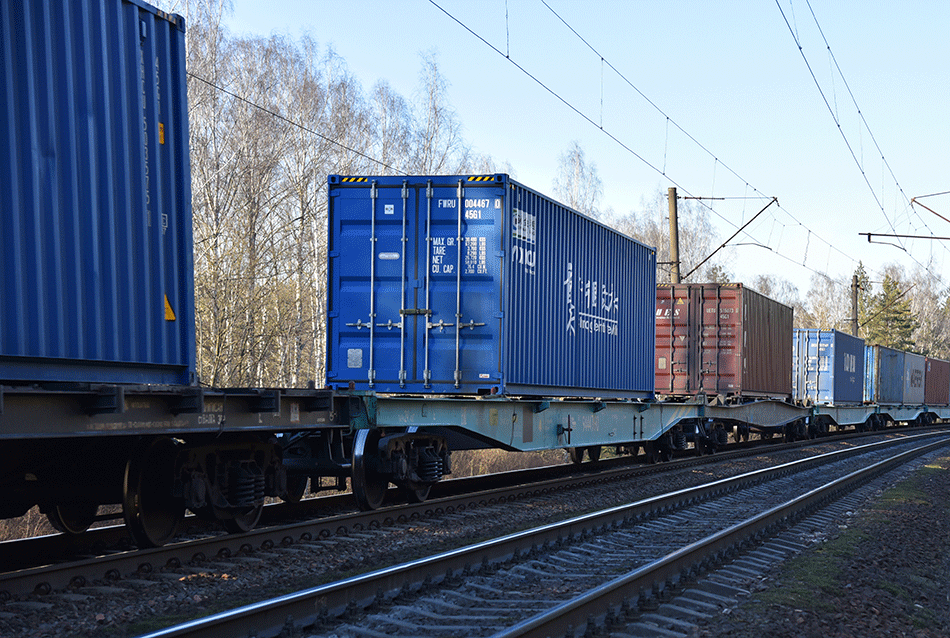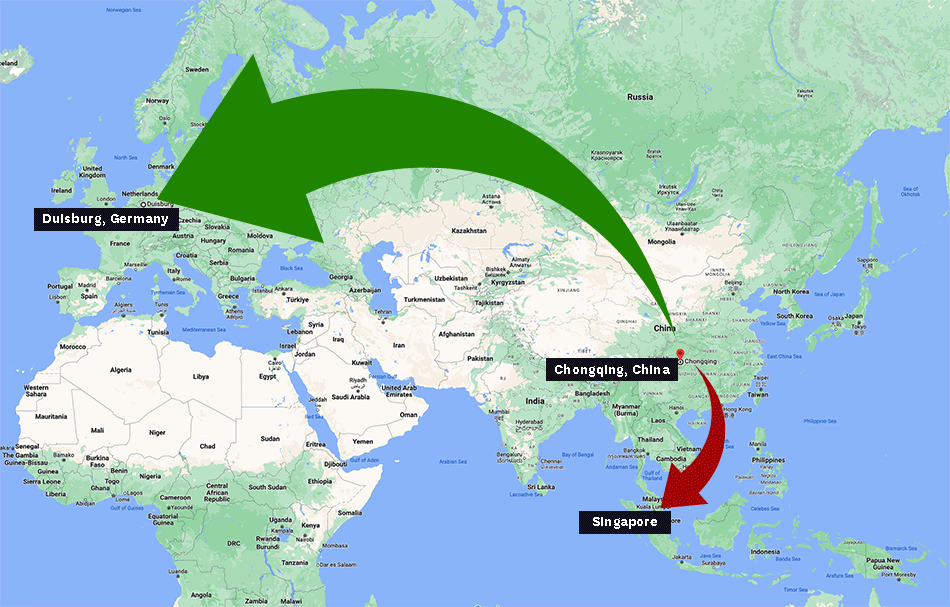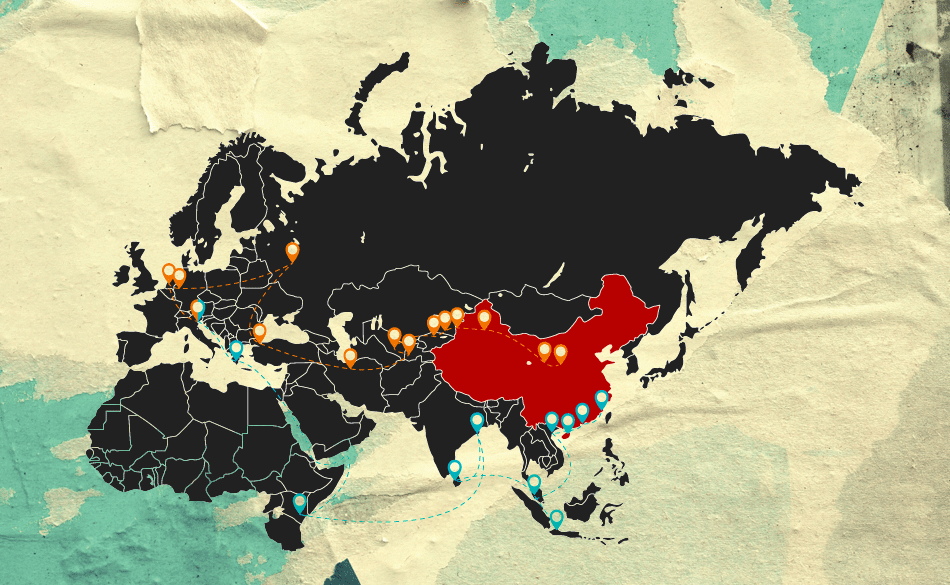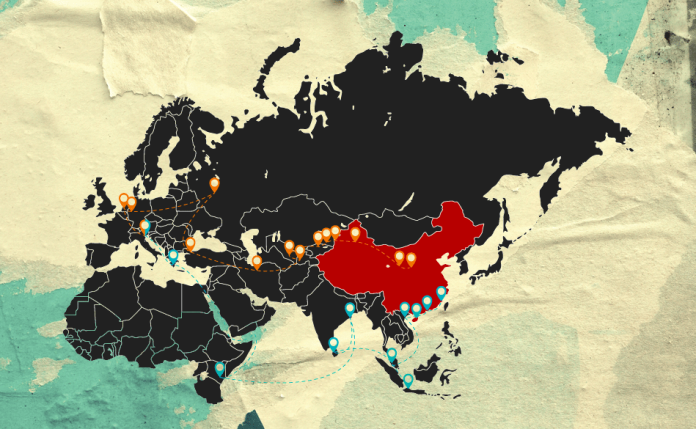[ad_1]
The 12 months 2023 marks the tenth anniversary of the Belt and Street Initiative (BRI), a transcontinental connectivity venture launched by China in 2013 to foster infrastructure improvement and commerce progress, plus different actions for selling worldwide cooperation, similar to cultural trade. Nevertheless, Western media protection usually portrays the BRI as a Chinese language-government-led technique to venture geopolitical affect, even with the intention of gaining benefit in growing infrastructure initiatives through so-called “debt-trap” diplomacy. As this narrative hangs on very sketchy proof, educational analysis on the BRI as a geopolitical marketing campaign overlooks the in depth geo-economic construction of connectivity formed by the BRI’s first decade.
In a simplistic view, the BRI’s geo-economic connectivity seems linear and lengthy through the extent and attain of the Silk Street Financial Belt and the twenty-first-century Maritime Silk Street. The true and realised combine of recent connections, nevertheless, has been wider and extra dispersed. These connections have taken type as a part of the BRI’s six most important financial corridors and a rating of sub-corridors rising close to or extending from the six most important corridors (see numbers 1-6 vs 7-10 in desk 1). They’ve unfolded a brand new period of corridor-centric world geo-economic connectivity through webs of transport and different infrastructural pathways between and amongst pairs of, or a number of, cities and their surrounding areas. The China-Laos Railway (CLR), anchored at every finish to the cities of Kunming, capital of China’s Yunnan province, and Vientiane, capital of Laos, strings collectively round 20 cities and main cities throughout southwestern China and central Laos.


The BRI (sub-)corridors range significantly in size. Whereas the CLR stretches round 1,000 km, the longest China-Europe freight prepare route between the Chinese language metropolis of Shenzhen and the German metropolis of Duisburg is over 13,000 km. Whereas these train-enabled transport corridors span worldwide boundaries to achieve a cross-regional scale, a lot of corridors have fashioned on the native degree and brief size through Chinese language-built bridges, expressways and lightweight rail strains that create and facilitate connectivity throughout and inside cities and their neighbouring territories. Examples embrace the Pupin Bridge throughout the Danube in Belgrade, the expressway round Nairobi and the Orange subway line in Lahore. Though these run for under a different variety of few kilometres, they perform as crucial commuting or transport corridors to foster new and extra environment friendly local-regional flows of individuals and items for bettering livelihood.
City and financial corridors have been round a very long time. The BRI-induced regional financial corridors, nevertheless, exhibit new options relative to such current disruptive dynamics as fragmenting financial actions, susceptible provide chains, great-power competitors, and the warfare in Ukraine, with its resultant financial sanctions towards Russia.
Within the age of digital world connectivity, these materials corridors seem typical. At a time of rising financial fragmentation and a possible for supply-chain decoupling as a result of intense nationalism and great-power rivalry, the BRI-induced corridors, no matter their size, present a brand new spherical of bodily connectivity to strengthen commerce and different exchanges throughout a lot of locations throughout regional boundaries. These corridors collectively add as much as a wave of regionalising forces and native developments from “the center and under” vs the distributed energy of the worldwide economic system and nationwide polity. They produce new horizontal alternatives for commerce and financial progress originating and spilling over from inside China to its neighbouring areas and farther past.
Towards the prevailing narrative of the BRI as a top-down technique to unfold China’s geopolitical affect, I see the BRI’s impression via its first decade as emanating “from the center out and backside up” through transport-enabled corridors traversing a lot of areas inside and throughout nationwide territories. On this essay marking the BRI’s tenth anniversary, I discover the options of the BRI-centric connectivity with a take a look at the early penalties of a brand new China-anchored land-sea hall throughout three linked cross-border regional contexts.
Towards Hall-Centric Connectivity


City and financial corridors have been round a very long time. The BRI-induced regional financial corridors, nevertheless, exhibit new options relative to such current disruptive dynamics as fragmenting financial actions, susceptible provide chains, great-power competitors, and the warfare in Ukraine, with its resultant financial sanctions towards Russia.
The early scholarship on corridors targeted on urban-regional corridors within the Sixties. It recognized linearity and transport infrastructure as two defining options of city corridors, which had been tied to the twin axes of (sub)urbanisation and financial improvement linking two or extra cities and the territorial areas between them. In addition to their linear construction, city corridors tackle such network-like attributes as poles at each ends and secondary nodal factors between the 2 poles, with any branches and factors as spin-off strains and lower-level locations, respectively. The “BosWash” (Boston-Washington DC) hall alongside the japanese seaboard of the US certified as a prototype for the pioneering examine by geographer Jean Gottmann within the early Sixties.
Quick-forwarding to the early 2010s, a broad comparative examine recognized 67 city corridors all over the world. Round 95 per cent of these started and ended inside nationwide territories just like the BosWash hall. Roughly 60 per cent of the 67 city corridors had been anchored to and cross via two or extra main nationwide and worldwide centres and their comparatively well-integrated instant hinterlands in superior economies. They had been usually between 400 km and 1,200 km lengthy and 70 to 200 km broad. Nearly all of those corridors had been formed largely by market-based forces of city, financial, and transport progress, with restricted nationwide and subnational planning and inter-city coordination.
The CEFT has not been all clean. The hurdles embrace the pandemic-induced provide chain disruptions, occasional visitors congestion at a small variety of essential border crossings like Małaszewicze, Poland, and lagging logistical infrastructure at a number of hubs alongside some routes to help environment friendly prepare crossings.
Regardless of a partial temporal overlap, the BRI-enabled regional corridors since 2013 differ from the existent city corridors in a number of respects. First and most clearly, the BRI corridors have been initiated or pushed by China. Whereas geographically fuzzy, the BRI corridors vary broadly in general size and diploma of linearity, with the China-Europe freight prepare route between Shenzhen and Duisburg topping 13,000 km, whereas the China-Laos Financial Hall outlined by the CLR runs for 1,000 km between Kunming and Vientiane. The BRI corridors cowl a big mixture of growing nations and their cities with their various regional hinterlands, and thus comprise much less spatial coherence than older city corridors in developed nations. The BRI corridors additionally embody a bigger variety of smaller and marginal locations that includes better uneven geographical improvement.
As well as, the BRI corridors cross a great variety of worldwide borders, which act as generic geographical boundaries for the transport of traded items. Alternatively, the BRI corridors span land and sea boundaries and thus permit landlocked nations and cities to entry maritime commerce, as exemplified by the CLR, which helps scale back the friction of the barrier impact of borders. Lastly, some BRI corridors are “docked” into each other and type distinctive segments of longer corridors, such because the China-Central Asia freight prepare routes and the Western China Land-Sea Hall anchored to and channelled by the megacity of Chongqing.
Given the BRI’s recency, it’s a little early to take a full stock of all corridors and sub-corridors that may be instantly or not directly attributed the BRI, though their numbers could approximate 30. It’s, nevertheless, fairly clear that the BRI has instantly formed six most important financial corridors extending from completely different factors or components inside China out into its neighbouring Asian territories to achieve Europe and the Center East (desk 1).
Desk 1 additionally lists 4 sub-corridors (numbers 7-10) which have spun off the six most important corridors. These sub-corridors span and cross a number of nations (II). They’re additionally anchored to key cities or nodal hubs and linked by different cities alongside the commonly linear geographies lined (III). Lastly, these corridors are distinguished by their key freight prepare route and its hyperlinks to different modes of transport because the scope and energy of their logistical connectivity (IV).
Whereas these BRI-enabled corridors and sub-corridors are younger and nonetheless taking form, their key geographical and compositional options present stable grounding for his or her formation and improvement, in addition to their rising impression as they broaden. Extra importantly, in trying again at these corridors, I see them as crucial to understanding the essence of the BRI and its cumulative impression over the previous decade.
The Western China Land-Sea Hall as Impactful New Connectivity


I selected Hall No. 9 to look at for 2 necessary causes. First, the Western China Land-Sea Hall (NLSC) bridges three of the BRI most important corridors (Nos. 1, 3 and 4) to permit a separate however joint take a look at how these corridors have grow to be linked into a brand new and longer hall channelling better commerce flows. In different phrases, the hall is each “sub” and “tremendous”, in that it connects three present corridors for a mixed evaluation. Second, the NLSC is anchored to and channelled by Chongqing, which occupies a nodal place past any pair of typical two termini between any single hall and their roles in land-sea intermodal delivery.
The regular China-Europe freight prepare
The BRI’s first decade is temporally virtually coterminous with the China-Europe Freight Practice (CEFT), which made its maiden journey from Chongqing to Duisburg in 2011. If that inaugural run portended commerce and logistical connectivity embodied by the BRI, the CEFT has exceeded its little-recognised potential for turning into a transcontinental transport community spanning Eurasia. From one single path to a handful of routes and about 80 trains, with just one prepare from Europe again to China by 2013, the CEFT grew quickly over the following decade. The variety of CEFTs reached 16,000 in 2022, with a cumulative variety of 73,000 trains since 2011. These trains run on 82 routes between over 100 Chinese language cities and 216 cities throughout 25 European nations and numerous Central, East, West and Southeast Asian nations bordering or close to China. They carried 6.9 million containers with cargo price over $400 billion and protecting greater than 50,000 varieties of items by July 2023. Throughout the first half of 2023, 2,754, 1,563, and 4,324 freight trains ran via the CEFT’s Jap, Central, and Western corridors, respectively, alongside the China-Kazakhstan, China-Mongolia, and China-Russia borders. This whole of 8,641 trains carrying 936,000 containers was up 16 per cent and 30 per cent over the identical interval of 2022 and anticipates the overall variety of trains and containers to surpass final 12 months’s figures by the top of 2023.


The CEFT has not been all clean. The hurdles embrace the pandemic-induced provide chain disruptions, occasional visitors congestion at a small variety of essential border crossings like Małaszewicze, Poland, and lagging logistical infrastructure at a number of hubs alongside some routes to help environment friendly prepare crossings. Probably the most disruptive problem emerged when the warfare in Ukraine broke out. The West-imposed sanctions on Russia, together with the Russian railways, raised dangers that led some China-based European and US producers to droop delivery by the CEFT. The German carmaker Audi, which has in depth provide chains to China, stopped utilizing the Trans-Siberian Railway linking the Jap and Central routes to the Western path to enter East-Central and Western Europe.
But this downturn didn’t final lengthy. July and August of 2022 noticed new information of 1,517 and 1,601 trains, respectively, the latter of which was up 21 per cent in year-over-year progress. The town of Duisburg, main all European cities, started to course of a comparable variety of trains from China in June 2023. This restoration has benefited from extra freight trains switching to land-sea intermodal delivery by crossing the Caspian Sea, Azerbaijan, Georgia, and Turkey into Europe, which is called the CEFT’s Southern Hall, or the Center Hall extra broadly.
In July 2023, the southern Chinese language metropolis of Guangzhou launched the intermodal “China-Kyrgyzstan-Uzbekistan” service from the Nice Bay Space to Tashkent through Kyrgyzstan.
Given its geographical protection, the CEFT has mainly fashioned the arteries of the BRI’s most important Corridors 1 and three (desk 1), extra the previous than the latter. Furthermore, the CEFT’s regular run, with its resilience via the Ukrainian disaster, has solidified the spatial basis and type of Corridors 1 and three. Because the CEFT has steadied its operation, it has handled such monetary and logistical challenges as sanction-induced threat of account settlement by introducing the RMB instead foreign money to the US greenback. Some firms have arrange abroad warehouses at or close to most important hubs to unfold dangers and plan higher for processing future cargoes.
In a current enchancment beginning on 1 July 2023, the Chinese language metropolis of Xi’an, capital of Shaanxi province and the highest-ranked metropolis in sending and receiving CEFTs, regularised two scheduled companies to Duisburg on Wednesday and Saturday every week, up from as soon as per week. This regularised schedule has eliminated the unpredictability of stopping on the two border crossings between China and Kazakhstan and Belarus and Europe with the intention to swap from customary to wider gauges after which again to achieve any European or Chinese language vacation spot. This shortens the time of journey alongside your complete path to 11.5 days, from 14-16 days. The return prepare additionally began on a brand new and equally harmonised schedule, leaving Duisburg for Xi’an on 27 June 2023 and arriving on 9 July. These enhancements additional refine and strengthen the China-European freight prepare hall, a well timed accomplishment for the BRI’s tenth anniversary.
The accelerating China-Central Asia freight prepare
For a lot of the previous decade, the CEFT has been key to sustaining Hall No. 1, which technically hyperlinks the Chinese language japanese port metropolis of Lianyungang and Rotterdam throughout the total size of Eurasia. But the CEFT comprises the China-Central Asia freight prepare as a partial however integral set of routes with their termini and linked cities. This has not solely helped consolidate the delivery and commerce orientations and features of Hall No. 1 but in addition accentuates the China-Central/West Asia phase of Hall 3 (desk 1). The China-Central Asia freight prepare has differentiated itself from the CEFT as a shorter and extra targeted delivery community lately, with extra freight trains arriving in and departing from Central Asia, within the wake of the Shanghai Cooperation Organisation Summit in Samarkand in September 2022, and particularly because the first China-Central Asia Summit in Xi’an in Could 2023.
Earlier on, throughout the previous decade, the China-Central Asia freight prepare largely ran from China to Europe and again via Kazakhstan, with a comparatively small variety of trains terminating in Kazakhstan’s industrial centre and former capital of Almaty, situated 350 km from the China-Kazakhstan border. The profit ensuing to Kazakhstan from robust freight prepare hyperlinks with China was largely confined to border-crossing charges and the restricted logistical progress of its small border cities like Altynkol, going through Horgos and Dostyk reverse Alashankou. Extra lately, the China-Central Asia freight prepare has broadened throughout Central Asia in two methods. First, it has expanded rail connections past Kazakhstan to Kyrgyzstan, Uzbekistan, and Turkmenistan. With its feasibility examine being accomplished in Could 2023, the deliberate China-Kyrgyzstan-Uzbekistan Railway linking Kashgar and Tashkent, the capital of Uzbekistan, via Jalalabad, Kyrgyzstan is transferring quicker towards building, with a focused completion in 2026 (see map 1). This new railway will shorten freight prepare delivery from China to Europe and West Asia/Center East by 900 km, creating the shortest rail route between China and Europe.
Map 1: The route of the deliberate China-Kyrgyzstan-Uzbekistan Railway


The second enlargement has concerned intermodal delivery from extra Chinese language cities alongside further routes and border crossings. In July 2023, the southern Chinese language metropolis of Guangzhou launched the intermodal “China-Kyrgyzstan-Uzbekistan” service from the Nice Bay Space to Tashkent through Kyrgyzstan (see picture 1). The prepare switched to trucking on the border crossing of Irkeshtam within the Kashgar area after which reverted to coach at Osh, Kyrgyzstan, earlier than reaching the vacation spot of Tashkent. A logistics firm primarily based in Xinjiang deliberate to organise 25 freight trains from the Nice Bay Space alongside the China-Kyrgyzstan-Uzbekistan route by the top of 2023. Additionally in July 2023, an an identical prepare service was launched by the commercial metropolis of Langfang in Hebei province and reached Tashkent after 6,000 km and 12 days. It marked a brand new delivery route between the Beijing-Tianjin-Hebei mega-region and key Central Asian cities.
These two new routes symbolize a rising variety of China-Central Asian intermodal freight connections between such cities as Shanghai, Zhengzhou (Henan province), Xi’an, and numerous smaller cities throughout China and Almaty, Bishkek (capital of Kyrgyzstan), and Tashkent in Central Asia. The world’s solely main double-landlocked nation, Uzbekistan has benefited significantly from these new freight routes resulting in maritime delivery through japanese China. These new transport hyperlinks have additional elevated the significance of Central Asia in each Corridors 1 and three (desk 1).
Photograph 1: The Nice Bay Space’s inaugural intermodal freight prepare for the “China-Kyrgyzstan-Uzbekistan” route departed Guangzhou on 4 July 2023


The dynamic China-Laos railway
Because the China-Central Asia freight prepare broadens China’s logistical connections to the west, one other new freight (and passenger) railway line alongside the China-Indochina Peninsula Financial Hall (No. 4 in desk 1) has created quickly rising delivery ties between China and Laos, and Southeast Asia extra broadly. Launched into operation on 3 December 2021, the CLR has, over simply 18 months, grow to be the transport spine of the China-Laos Financial Hall, a sub-corridor (No. 7, desk 1). In different phrases, the CLR has performed a key position in creating and shaping a dynamic sub-corridor between China and Laos from the BRI’s No. 4 most important hall.
Photograph 2: The president of Laos, Thongloun Sisoulith


By 2 January 2022, one month into its operation, the CLR ran 50 freight trains in each instructions, carrying practically 50,000 tons of cargo, a few of which crossed the border after clearing inflexible customs and sanitary management procedures throughout the COVID-19 pandemic. Within the interval 1 January-13 April 2023, the variety of CLR freight trains reached 1,130, averaging 11 trains a day, up 122 per cent over the identical interval of 2022. The freight carried amounted to 1.18 million tons. The variety of shipped items rose from lower than 100 to over 2,000. By 18 April 2023, the cumulative quantity of shipped cargo on the CLR reached 18.8 million tons, which comprised 14.6 million tons inside China, 4.2 million inside and past Laos, and over 4 million of each segments throughout the China-Laos border. By 3 June 2023, 18 months after the CLR went into operation, its shipped cargo surpassed 12 million tons, whereas its cumulative variety of passengers topped 16.4 million, which accelerated after the worldwide passenger through-train service started on 13 April 2023 with straightforward and quick visa clearing throughout 12 lanes on the border crossing.
Beginning out as a three way partnership between Chongqing and Guangxi province, the NLSC has expanded to incorporate six extra provinces with eight fairness ownerships that contain seven regional stockholding firms and one abroad firm in Laos.
By means of channelling financial and human actions alongside the China-Laos Financial Hall, the CLR has reworked the Laotian economic system and society. The CLR has tremendously facilitated not solely China-Laos bilateral commerce primarily based on their comparative benefits but in addition bigger and broader flows of traded items between China and ASEAN, particularly because the fortuitous timing of the Regional Complete Financial Partnership (RCEP), which grew to become efficient on 1 January 2022. The CLR has despatched extra equipment, family electronics, and recent flowers (largely from Yunnan province) to Laos and past, whereas Laos has exported extra steel ore and minerals, cassava, tropical fruits, and different agricultural items to China. The CLR’s cold-chain freight automobiles permit dependable delivery of such time-sensitive items as recent flowers and fruit. It has reduce the price of delivery between Kunming and Vientiane by 40-50 per cent.
On the passenger facet, the CLR has stimulated better tourism and different functions of cross-border journey. Whereas passenger trains inside China common about 42 per day, as a result of its bigger inhabitants and better demand and earnings ranges, the elevated curiosity in journey on the Laotian facet, together with Thailand, has raised the typical variety of trains from one to 6 and as many as 10 every day.
By the standard proof on flows, the CLR has reworked landlocked Laos to a newly land-linked nation able to funnelling better commerce between China and Southeast Asia. Furthermore, the CLR has created over 110,000 jobs in commerce, logistics, and tourism alongside the route, and employed over 3,500 workers only for the railway. Inspired by the CLR, the Boten Particular Financial Zone on the Laotian facet of the border crossing has drawn 768 resident corporations with cumulative registered capital of $1.6 billion. Laos’s very first rail system, the CLR has lately earned the laudatory remark of Laotian President Thongloun Sisoulith that this new railway is his nation’s satisfaction (see picture 2).
Connecting A number of Corridors
As extra freight trains run between China and Europe, Central Asia, and Laos with extensions to Southeast Asia, the financial and logistics corridors and sub-corridors linking them have grow to be linked into a brand new land-sea hall (NLSC) via Western China (No. 9 in desk 1) that ties cargo flows throughout a number of home and worldwide boundaries. Led by China and in operation since 2017, the NLSC is essentially the most integrative of all BRI-enabled corridors in that it ties three distinctive freight programs throughout Eurasia – Europe, Central Asia, and Southeast Asia – into an extended and extra prolonged multimodal delivery route that includes the central nodal, connective, and consolidating roles of Chongqing in and thru southwestern China (see map 2).
Map 2: The Western China New Land-Sea Hall (NLSC)


On 5 July 2023, the Gansu provincial subsidiary of the NLSC despatched a prepare from the capital metropolis of Lanzhou to town of Kashgar, from the place the cargo was switched to vehicles that exited China on the border crossing of Irkeshtam and reached town of Osh, Kyrgyzstan. There, the cargo was reloaded on to a freight prepare to achieve Mazar-i-Sharif in northern Afghanistan because the vacation spot. This inaugural run marked the start of the “China-Afghanistan Specific”, an extension from the “China-Kyrgyzstan-Uzbekistan” intermodal route, which might be a extra direct and efficient delivery hyperlink when the deliberate China-Kyrgyzstan-Uzbekistan Railway is accomplished (see map 1). On 13 July 2023, the NCLS and town of Kashgar formalised an settlement to strengthen cooperation on channelling extra intermodal, rail-road companies between Western China and Central Asia with the intention to deepen their commerce and logistical relations.
On 7 July 2023, a freight prepare left the megacity of Chengdu, close to Chongqing, for Budapest, Hungary. It carried automobile components and elements from Thailand that had departed on 1 July and arrived in Chengdu through the CLR, earlier than the rail journey to Budapest, the place the freight prepare arrived on 17 July 2023. This journey of 17 days from Thailand to Hungary saved practically 20 days and 20 per cent of the associated fee relative to the road-rail and road-sea routes of the previous. This route represents the mixed use of the CLR’s “Lancang-Mekong Specific” and the “Chengdu-Europe Specific” freight companies. It now runs three days per week on an everyday schedule protecting the journey between Vientiane at one finish and numerous European cities in as few as 15 days on the reverse finish of Eurasia. On 15 July 2023, the NCLS and the ASEAN Federation of Forwarders Affiliation (AFFA) of the Worldwide Federation of Freight Forwarders Associations (FIATA) signed a MOU to strengthen cross-Eurasian logistics via resource- and information-sharing, with the first purpose of enhancing China-ASEAN regional financial integration.
The NLSC’s anchor and central hub, Chongqing, has benefited essentially the most from a wider and extra environment friendly set of direct or via delivery routes, that includes extra built-in rail-rail, rail-sea, and rail-road hyperlinks. Chongqing lately despatched a freight prepare loaded with native industrial components to Kunming, from the place a CLR freight prepare carries the cargo to the city of Padang Besar in northern Malaysia bordering southern Thailand through the metre-gauge monitor from Vientiane to Bangkok. The journey took solely 13 days, reducing the time required by the standard land-sea or river-sea delivery alongside the Yangtze River by 40 per cent. This rail hall has created a brand new logistics alternative for Chongqing’s native firms to export extra to abroad markets, avoiding the unpredictable downside of Yangtze’s uneven water ranges throughout both its dry or flooding season through conventional river-sea delivery to and from an japanese seaport to Southeast Asia.
The Broader Implications of Corridorisation


Because the BRI has created a worldwide buzz about constructing extra infrastructure within the world South and China’s capability of delivering it at scale and velocity, the BRI-enabled financial and logistics corridors and sub-corridors stand out as its most geographically distinctive and impactful feat. By connecting over 200 cities throughout Eurasia and past that in any other case wouldn’t be linked on this method, this corridorisation has unleashed massive commerce and cargo flows amongst extra events and locations, diverting some from the slower, albeit lower-cost, maritime delivery routes. The BRI corridors have reshaped urban-regional positions and relations throughout Eurasia by including logistical features to small and beforehand marginal cities like Horgos and Alashankou on the China-Kazakhstan border and Boten on the China-Laos border. Moreover, the BRI-induced corridorisation has carved a set of delivery pathways for commerce flows via a number of crossings alongside China’s home/worldwide divide. This produces multifaceted financial spillovers from “the center out and backside up” that spreads some improvement advantages to cities and areas neighbouring and farther past China.
Whereas extra delivery connections amongst extra locations are usually fascinating, corridor-centric connectivity can have a double-edged impact. As they hyperlink extra localities in a linear vogue, corridors name for rising utilization, better integration, and efficient governance. If demand for extra delivery alongside these corridors doesn’t materialise, it could result in some wasteful infrastructure funding and improvement and stimulate cut-throat competitors on delivery costs amongst extra rival logistics corridors. As extra subnational governments and personal companies enter extra corridors as gamers or members, how would they cooperate with each other to facilitate extra environment friendly processing of freight trains and vehicles via extra border crossings and scale back inter-local variations that is probably not simply resolved by bilateral or multilateral nationwide agreements?
Whereas the NLSC has carried out fairly properly in facilitating linked cargo stream round Europe, Central Asia, China, and Southeast Asia, it must be higher in fostering even quicker and smoother coordination of customs clearance, customary compatibility, and different governance issues. The NLSC’s new five-year plan for 2023-27 goals to handle these challenges extra purposefully and strategically.
Because the BRI marks its first decade of existence, it has introduced a rating of financial and logistics corridors into existence that can proceed to serve their objective of transferring extra traded items throughout Eurasia and past. However this isn’t sufficient. As partially documented earlier, these BRI corridors carry broader implications that embrace stimulating extra urbanisation and industrialisation alongside the railway and intermodal routes, creating potential financial agglomeration and fostering better regional integration. At a time of partial world financial fragmentation and even decoupling, the BRI regional corridors type a well timed countering drive with and thru their wider and stronger logistical connectivities for better cross-border commerce flows.
Acknowledgement:
This text attracts partly on my speak on the Asian Research Heart of Boğaziçi College, Istanbul on 25 Could 2023, a public lecture sponsored by the Centre for Superior Safety, Strategic and Integration Research on the College of Bonn and Friedrich Naumann Stiftung on 23 June 2023, and a presentation on the workshop on “The tenth Anniversary of the Belt and Street Initiative” on the College of Bonn and the Academy of Worldwide Affairs of North Rhine-Westphalia, Germany on 7 July 2023. The analysis undergirding this text is supported by the Paul E. Raether Distinguished Professorship Fund at Trinity School, Connecticut, USA.
This text was initially printed in The World Monetary Evaluation on 18 August 2023. It may be accessed right here: https://worldfinancialreview.com/from-the-middle-out-and-bottom-up-the-belt-and-road-initiative-at-10-and-corridor-connectivity/
In regards to the Creator


Notes
- Jean Gottmann, The Megalopolis: The Urbanized Northeastern Seaboard of the US. The MIT Press, 1964.
- Georg, Isabel, Thomas Blaschke and Hannes Taubenböck. “A International Stock of City Corridors Primarily based on Perceptions and Night time-Time Gentle Imagery”. Worldwide Journal of Geo-Data 5 (233): 1-19, 2016. doi:10.3390/ijgi5120233.
- China’s Belt and Street Initiative net portal, 7 July 2023; accessed at https://mp.weixin.qq.com/s/mQIvw2rprQZ8Y6oomkYRPA.
- The Horgos Zero Distance WeChat platform, 4 July 2023; accessed at https://mp.weixin.qq.com/s/kQAaZVnWPHFmsbF8xuv1Pg.
- Similar as No. 3.
- Chen’s interview at Duisport, 14 June 2023.
- China’s Belt and Street Initiative net portal, 17 April 2023; accessed at https://mp.weixin.qq.com/s?__biz=MzI4ODQ3MTE2NQ==&mid=2247577020&idx
- China’s Belt and Street Initiative net portal, 20 April 2023; accessed at https://mp.weixin.qq.com/s?__biz=MzI4ODQ3MTE2NQ==&mid=2247577296&idx
- China’s Belt and Street Initiative net portal, 14 June 2013; accessed at https://mp.weixin.qq.com/s?__biz=MzI4ODQ3MTE2NQ==&mid=2247580756&idx
- Similar as Word 8.
- The Boten Particular Financial Zone net portal, 21 June 2023; accessed at https://mp.weixin.qq.com/s?__biz=MzU3NzU1MzM1OQ==&mid=2247504880&idx
- The New Land-Sea Hall net portal, 20 June 2023; accessed at https://mp.weixin.qq.com/s?__biz=MzU0OTUwOTc0NA==&mid=2247518409&idx
- China’s Belt and Street Initiative net portal, 3 July 2013; accessed at https://mp.weixin.qq.com/s?__biz=MzI4ODQ3MTE2NQ==&mid=2247582192&idx
- The Exploring the New Silk Street WeChat platform, 9 July 2023; accessed at https://mp.weixin.qq.com/s/kuzZjQTEB2WhRO_vqwFS_A.
[ad_2]


